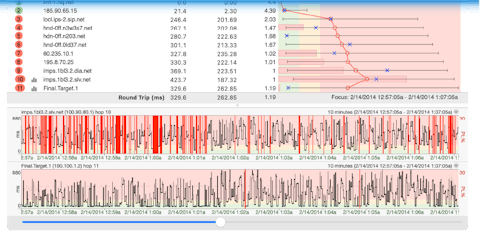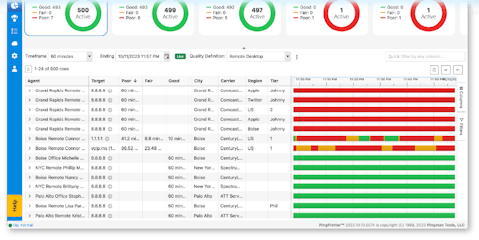Monitor Internet Connections for Remote Workers with a Single Trace
When actively troubleshooting a large remote network, multiple traces can be beneficial. It can help you pinpoint the source of problems quicker and more efficiently. However, just one trace per device can give you the insight you need into a remote worker’s home network and ISP.
Some customers use multiple traces on multiple computers to the same targets simultaneously. That kind of deployment looks something like this:

This will certainly give you excellent information, but it might be more than you need. Since most IT teams already monitor critical services, you can just deploy a single trace on each remote worker’s device to monitor their internet connection.

The example above shows a VPN, but it could be any trusted target that would reliably show if a network started having problems. Combined with critical services monitoring, the deployment could look like this:

Or, something like this:

Setting up PingPlotter’s automated alerts will notify the IT team when a remote worker’s connection is beginning to experience issues. PingPlotter Sidekick also collects data about the LAN and WAN to show exactly where the network is slowing down. Sidekick can be remotely installed, started, and then removed when you go from active troubleshooting back to monitoring.


Once an issue is identified and resolved, a single trace will again be more than sufficient. Plus, you can add additional traces to respond to critical issues as they arise.
Our team is happy to design a trace plan for your situation and budget. Or just try PingPlotter Cloud free for a week and see for yourself. No meetings required.
Try PingPlotter Cloud Free for a Week
Test Remote Internet
Manage with Dashboard
Automate Troubleshooting Steps


